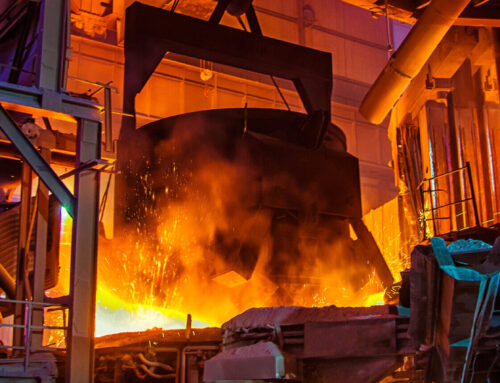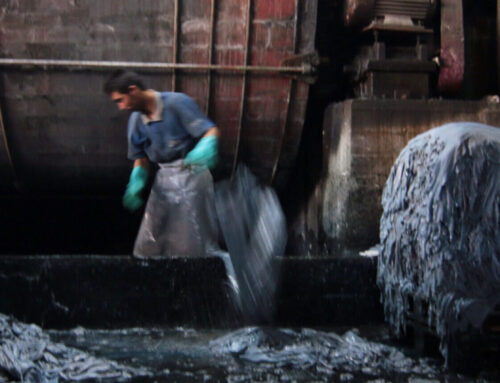The challenges of European diplomacy are considerable: increasing the commitments of the Parties, influencing the promise made by the developed countries to the developing countries to mobilise 100 billion dollars annually between 2020 and 2025, making the Paris Agreement fully operational, or moving towards the harmonisation of reference documents.
13 new states, including India, Saudi Arabia, Australia and Nigeria, have set carbon neutrality as a target for 2050, 2060 or 2070. More than 100 states have also agreed to reduce their greenhouse gas emissions by 2030 and 137 states have committed to halting and reversing deforestation by 2030.
The European Union wants to be a leading player in the fight against climate change, but its success depends on the alignment of the nations participating in COP26
The entry into force of the European Climate Law on 29 July demonstrated that the European Union wishes to be a model in the international governance of climate change and thus impact on that of all its external partners.
The adoption of the European objective of climate neutrality by 2050, as well as a net reduction in greenhouse gas emissions of 55% by 2030 compared to 1990 levels, should enable the European Union to align its climate strategy with the objective set out in the Paris Agreement of limiting the increase in global temperature to 1.5 degrees.
It is therefore with high but no less necessary ambitions that the Union and its Member States participated in the 26th Conference of the Parties, or COP26, held in Glasgow from 31 October to 13 November 2021.
The European Union cannot act alone and the challenges of European diplomacy, in order to accelerate global decarbonisation, are considerable: increasing the commitments of the Parties, influencing the promise made by the developed countries to the developing countries to jointly mobilise 100 billion dollars annually between 2020 and 2025, making the Paris Agreement fully operational, or moving towards the harmonisation of reference documents, in particular nationally determined contributions (in particular smoothing the rules for calculating greenhouse gas inventories).
More than a month after the COP26, what is the outcome?
The increased commitment of many states and new initiatives to reduce human impact on the climate are not enough to achieve the goals set by the Paris Agreement.
It is true that climate ambitions have increased: 13 new states, including India, Saudi Arabia, Australia and Nigeria, have set carbon neutrality as a target for 2050, 2060 or 2070. More than 100 states have also agreed to reduce their greenhouse gas emissions by 2030 and 137 states have committed to halting and reversing deforestation by 2030.
Other important initiatives include:
Nevertheless, it must be noted that these measures allow at best a global temperature increase of 2.3°C, well above the target set by the Paris Agreement (1.5°C).
The $100 billion in annual funding promised to developing countries in 2015 will not be reached until 2023, as developed countries prefer to finance their post-Covid recovery. This makes the 1.5°C target all the more difficult to achieve, as developing countries’ emission reduction targets remain systematically conditional on adequate technological and financial support.
Furthermore, commitments are often made without the main parties concerned, such as the non-participation of China, India and Russia in the Global Methane Pledge. Furthermore, of the 153 countries that have set a carbon neutrality target, only 61 have so far implemented their commitments through a law or policy document. The non-participation of France and Germany in the New Zero Emission Vehicle Agreement, even though the European Commission’s “Green Pact” aims to achieve the same objective, also illustrates that it is not easy to get all the Parties involved in a positive dynamic.
The European Union must achieve full alignment of its member states around the objectives of the European Climate Law, which requires the urgent validation and implementation of the ‘Fit for 55’ measures.
On its own territory, the European Union itself is struggling to coordinate all the climate policies of its members. Although the European Climate Law has come into force, the challenge of credibility remains: the European Union must define a regulatory framework that matches its low-carbon transition ambitions.
Two proposals in particular seem to be at the centre of attention: the creation of the Carbon Border Adjustment Mechanism (CBAM) and the end of the sale of new thermal vehicles by 2035.
Although the European Climate Law has come into force, the challenge of credibility remains: the European Union must define a regulatory framework that matches its low-carbon transition ambitions.
First proposal: the creation of the Carbon Border Adjustment Mechanism (CBAM)
The first aims to impose on certain products manufactured outside the EU the same carbon pricing that applies to the same European products. This border carbon tax, which would be a world first, targets the cement, steel, iron, aluminium, fertiliser and electricity sectors. Such a measure would ensure fairer competitiveness between European and foreign industrial players, avoid "carbon leakage" (the relocation of certain polluting products), be a source of revenue: up to 10 billion euros per year, and could encourage certain countries to reduce their emissions.
To date, there is no consensus on this provision among Member States, some of which fear protectionist reprisals, particularly from the United States and China, which could have an impact on their trade balance.
Second proposal: the end of the sale of new thermal vehicles by 2035.
This second proposal, which aims for zero emissions for all new vehicles sold from 2035 onwards, is not unanimously supported either. The countries with a car industry are particularly opposed to this and are suggesting that a derogation be put in place until 2039 for the most efficient low-emission vehicles. Many jobs would be lost: 501,000 among automotive suppliers according to the European Association of Automotive Suppliers (CLEPA). An entire industry will have to be retrained to create a competitive European battery industry in order to reduce such job losses.
The European Union wants to set an example: to limit the increase in global temperature to 1.5 degrees and to demonstrate that a collective, fair and cooperative low-carbon transition is possible. However, according to the European Union, only the validation of all 14 proposals of the "Fit for 55" will enable this objective to be reached. The adoption of the Climate Package must therefore bring people together beyond the contradictions between states and the massive economic and social trade-offs that it implies.
About Positivéco
At Positivéco, we see the new national and international regulations on CSR as an opportunity for positive growth.
Our aim: to apply financial and commercial skills to structure projects outside the traditional silos.
Since 2009, we have been supporting climate investment and development aid projects; we evaluate CSR policies and carry out extra-financial reporting for our clients. Positivéco advises financial institutions, public actors, listed and non-listed companies.
Request a callback today and discover how you can meet the new CSR requirements while serving the company’s project.

Who we are
With Positivéco, your success is our priority. Since our conception, we have always applied financial and commercial expertise outside the traditional silos, to structure successful and impactful client projects. This improves the visibility of your activities for enhanced profitability and increases your financial valuation.








Contact us now!